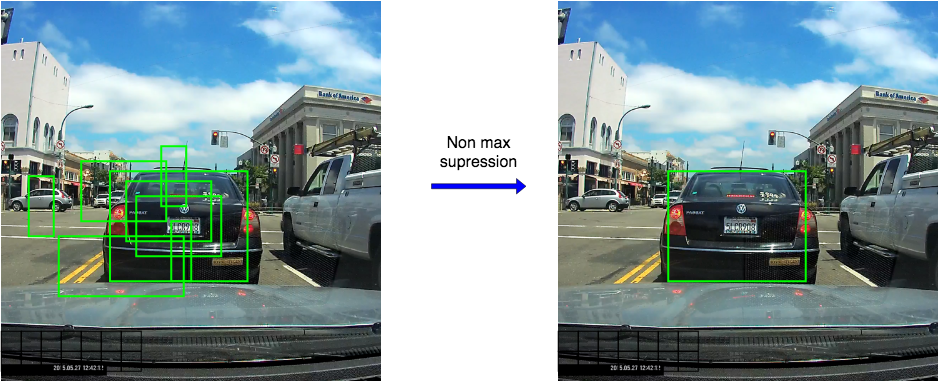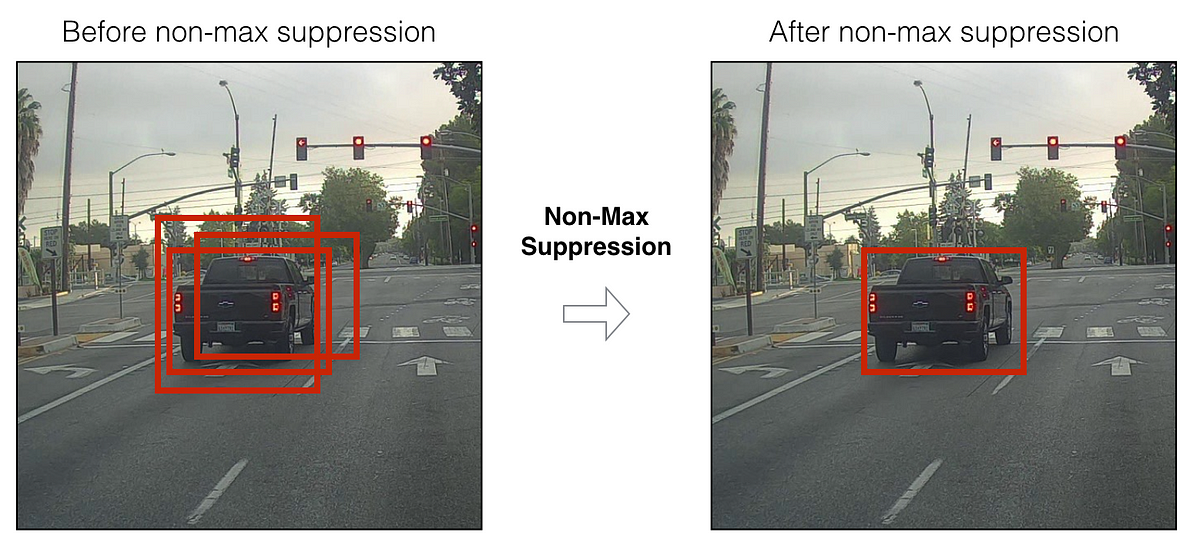As the proposal generation method should have high recall, we keep loose constraints in this stage. However processing these many proposals all through the classification network is cumbersome. The purpose of non-max suppression is to select the best bounding box for an object and reject or “suppress” all other bounding boxes. In your second case you are checking for gradient at degrees, so the edge is at 1degrees, so you keep.
Even for images that contain multiple objects, non-maximum suppression is able to ignore the smaller overlapping bounding boxes and return only the larger ones. Non-Maximum Suppression A CNN object detection model such as Yolovor Faster RCNN produces more bounding box (bbox) predictions than is actually needed. Non-maximum suppression in corner.
NMS is used to make sure that in object detection, a particular object is identified only once. Consider a 100X1image with a 9Xgrid and there is a car that we want to detect.
For instance if I have two boxes for “Cat” the the non max suppression would return suppressed box based on highest score. But if I have two overlapping boxes for (lets say) A Dog and A Cat.
Any direction for this use-case is deeply appreciated. None) Prunes away boxes that have high intersection-over-union (IOU) overlap with previously selected boxes.

Non - max suppression is a way for you to make sure that your algorithm detects each object only once. Now, while technically this car has just one midpoint, so it should be assigned just one grid cell.
And the car on the left. Lines 6-of our faster non -maximum suppression function are essentially the same as they are from last week.
We start by grabbing the (x, y) coordinates of the bounding boxes, computing their area, and sorting the indexes into the boxes list according to their bottom-right y-coordinate of each box. One indispensable component is non -maximum suppression (NMS), a post-processing algorithm responsible for merging all detections that belong to the same object. We propose a new network architecture designed to perform NMS, using only boxes and their score.
We report experiments for. Here, the cars are identified more than once. The Non-Max Suppression technique cleans up this up so that we get only a single detection per object.
Let’s see how this approach works. It first looks at the probabilities associated with each detection and takes the largest one. In the above image, 0. This was mentioned in several issues under the name : non max suppression work only on cpu. This is completely understandable because the default version of non _ max _ suppression is vwhich dosent have a gpu specialisation.
First, we filter boxes based on their objectness score. Generally, boxes having scores below a threshold (for example below ) are ignored. Non maximum suppression works by finding the pixel with the maximum value in an edge. If this condition is true, then we keep the pixel, otherwise we set the pixel to zero (make it a black pixel).

Do you happen to have a 1D non -maximum suppression algorithm written in Python. I need it for making a Canny edge detector in Python using scipy that takes as input a 1D intensity vector.
The de facto standard for NMS is a simple hand-crafted test time post-processing, which we call GreedyNMS. Non -Maximum Suppression (NMS) is the task of finding all local maxima in an image. This is often solved using gray-scale image dilation, which requires at least comparisons per pixel in 2-D. Now we had a homework where we were supposed to discretize this direction into.

A scalar integer Tensor representing the maximum number of boxes to be selected by non max suppression. A float representing the threshold for deciding whether boxes overlap too much with respect to IOU.
Setup the output, find all entries less than the max, then set anything at those entries equal to zero. Even after filtering by thresholding over the classes scores, you still end up a lot of overlapping boxes. A second filter for selecting the right boxes is called non -maximum suppression (NMS). YOLO can make duplicate detections for the same object.
To fix this, YOLO applies non -maximal suppression to remove duplications with lower confidence. Non -maximal suppression adds 2- 3% in mAP.
Aucun commentaire:
Enregistrer un commentaire
Remarque : Seul un membre de ce blog est autorisé à enregistrer un commentaire.